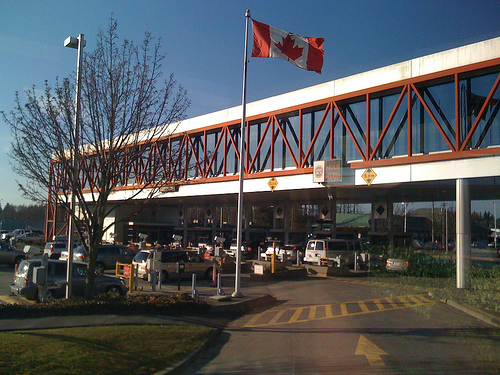Check out our Top Rewards Cards to boost your points earning and travel more!
Part 1 covered passport cards.
The under-utilized Global Entry program has struggled to gain widespread acceptance despite increasing promotion and press coverage. The Rapid Traveler is still surprised to see the computer terminals often empty as he breezes through US immigration. The Points Guy has a good post on his experience with the program, and a further post on a fee waiver for American Express Platinum cardholders (otherwise it is $100 for 5 years).
In short, Global Entry involves a background check and interview with biometrics, and upon approval, travelers at select US airports can use Global Entry computer terminals for expedited entry to the US. US citizens and permanent residents, Dutch citizens and Mexican nationals are eligible. Inclusion of Dutch citizens may seem random, but Amsterdam Airport (AMS) has its own trusted traveler program, Privium, useful for frequent travelers to Europe, and has a close partnership with the US.
But Global Entry is only one of several Trusted Traveler Programs from the US CBP (Customs and Border Protection). It is important to note that these are government programs, not to be confused with private companies that at times have provided expedited security screening programs at US airports. These CBP programs are limited to expedited immigration, having nothing to do with security screening.
The FAST Driver Program is for commercial truck drivers and not relevant to general travelers.
The NEXUS Program is specific to land and sea travel between the US and Canada, plus US pre-clearance at eight Canadian airports (pdf brochure with the list). For travelers unfamiliar with pre-clearance, on US-bound flights from Canada at these airports, travelers pass through US immigration before boarding, and lines can be very long. This is open to US and Canadian citizens and permanent residents and other nationals with temporary residence “may qualify.” The fee is $50 and one of the great benefits is that NEXUS cardholders can now use Global Entry kiosks anywhere in the US for no additional fee (some online processing and a fingerprinting may apply), saving $50 off the Global Entry fee. But to save the $50, travelers need to have access to a NEXUS enrollment center in US border states and Canada.
Mirroring NEXUS, SENTRI is for land and sea (but not air) travel between the US and Mexico. It is open to US citizens and permanent residents and Mexican nationals but costs $122.25. Enrollment centers are located in Arizona, California and Texas. SENTRI members also get Global Entry benefits for no additional cost, but Mexican nationals must go through the full Global Entry application process.
Yesterday, CBP announced that Global Entry standalone cards will be issued for applications approved July 12, 2011 or later. Existing members can get the card for $15. The cards can be used for entry to the US in place of NEXUS and SENTRI, but not for entry to Canada, so a passport or passport card would still need to be carried. In the past, Global Entry holders without NEXUS or SENTRI had to rely on the mood of the immigration officers to get expedited treatment.
It seems the card really only adds value for Mexico travel. But it is Western Hemisphere Travel Initiative-compliant so Global Entry members can save the $30 for a passport card and get the same benefits. This is an evolving program and hopefully the Canada issue will be resolved.
Readers, feel free to comment and share on your Global Entry, NEXUS and SENTRI experiences.
Check Out Our: Top Rewards Cards ¦ Newsletter ¦ Twitter ¦ Facebook ¦ Instagram

